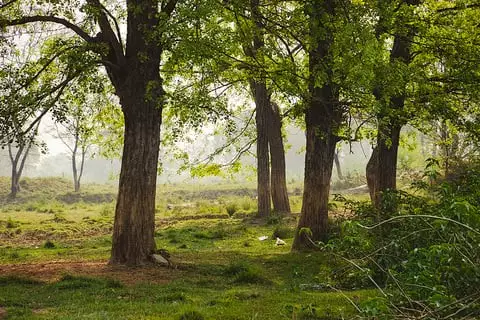The Convention on International Trade in Endangered Species of Wild Fauna and Flora (CITES) issued guidelines for sustainable rosewood trade at the 27th Plants Committee meeting.
Key Guidelines on the Trade of Rosewood Species:
- CITES members are advised to focus on the sustainable harvest and management of rosewood species.
- High-priority species identified need intensified conservation and management efforts.
- There are trade suspension recommendations for countries failing to manage sustainable and legal trade, particularly noted for Pterocarpus erinaceus.
About Rosewood:
- Commonly known as “palisander,” rosewood refers to several tropical hardwoods in the Fabaceae family.
- Key species include Dalbergia latifolia, Dalbergia sissoo, and Pterocarpus erinaceus.
- Utility: Primarily used for crafting furniture and musical instruments.
Role in Ecosystem:
- Soil Improvement: Enhances degraded soil through leaf litter that decomposes quickly and enriches the soil with nitrogen, phosphorus, and carbon.
- Nitrogen Fixation: Some species form beneficial relationships with soil bacteria to fix atmospheric nitrogen, aiding in ecological balance and soil fertility.
Ref: Source
| UPSC IAS Preparation Resources | |
| Current Affairs Analysis | Topperspedia |
| GS Shots | Simply Explained |
| Daily Flash Cards | Daily Quiz |
Frequently Asked Questions (FAQs)
What is CITES’ advice regarding the trade of rosewood species?
CITES advises focusing on sustainable harvest and management of rosewood species to ensure environmental conservation.
What does CITES stand for and what is its role?
CITES stands for the Convention on International Trade in Endangered Species of Wild Fauna and Flora, aiming to ensure that international trade does not threaten species’ survival.



